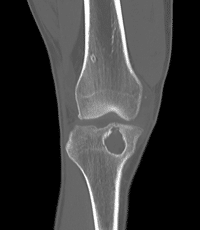Unfortunately ACL reconstruction grafts can tear after surgery. Many research studies have shown that the risk of tearing the ACL again after surgery is about 6% over 5 years. The highest risk of repeat injury occurs in the first year (about 2.5%). The second year risk is about 1.5%, and the risk of repeat injury reduces from the 3rd to the 5th years. From 5- 15 years after surgery, the risk of repeat injury to the ACL has been shown in 1 study to be 0.1%/year in women, and 0.3%/year in men. In addition, there is unfortunately also a 4-6% chance of injuring the opposite normal knee in the first 5 years after ACL reconstruction.
Patients who have torn their ACL reconstruction graft usually require revision ACL reconstruction, which is basically redoing the ACL reconstruction again. This is more complicated because an alternative graft (same side patellar tendon/hamstring (that was not used the first time), opposite knee, allograft) would need to be decided on with their relative advantages and disadvantages weighed and discussed.

Separately, the previous ACL tunnels may be in the wrong place, or may have gradually expanded into large holes in the bone over time. If the tunnels are small and can be "reused", then "One-stage Revision ACL reconstruction" can be performed. If the tunnels are severely expanded (see the picture below), then some patients may need a "Two-stage Revision". They would need a first operation to take bone from the hip area to fill in the expanded tunnels with bone. After 3-4 months, when the tunnels have filled in fully with solid bone, the second operation to redo the ACL reconstruction can then be performed, where appropriately sized tunnels can be safely made in the correct position into the bones.
